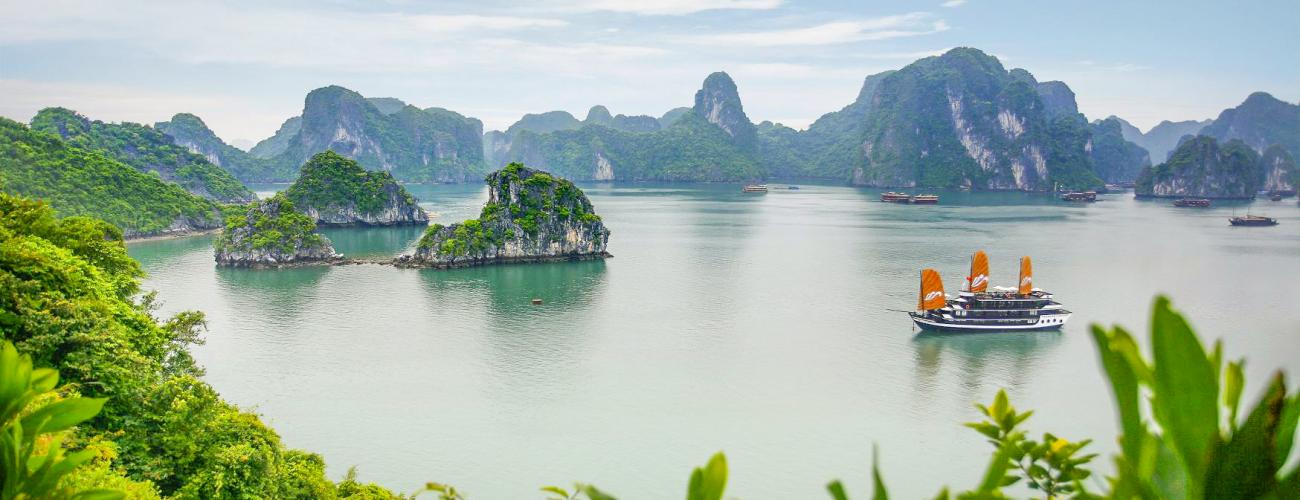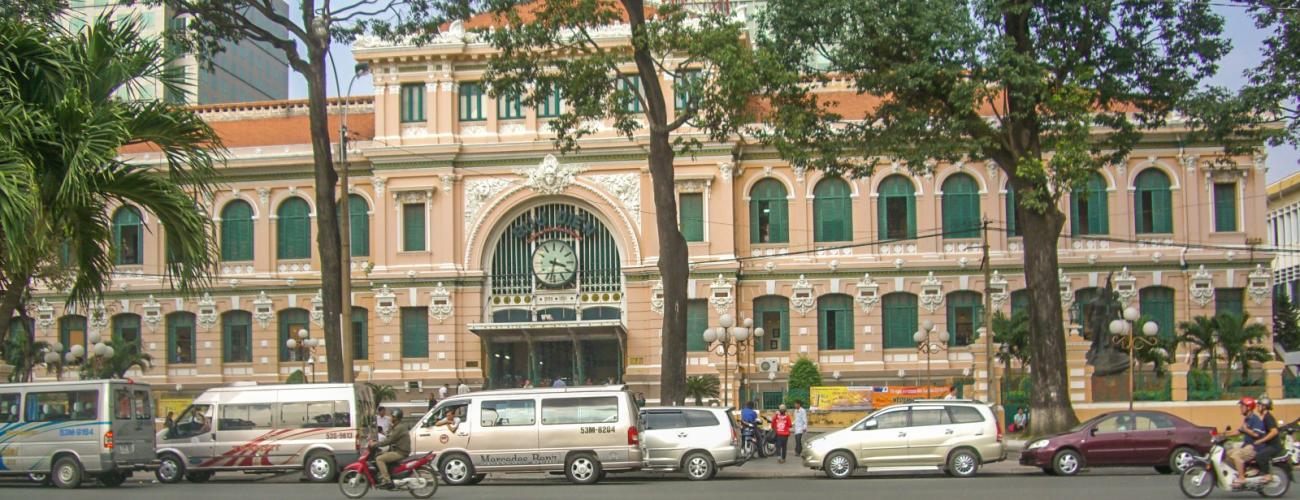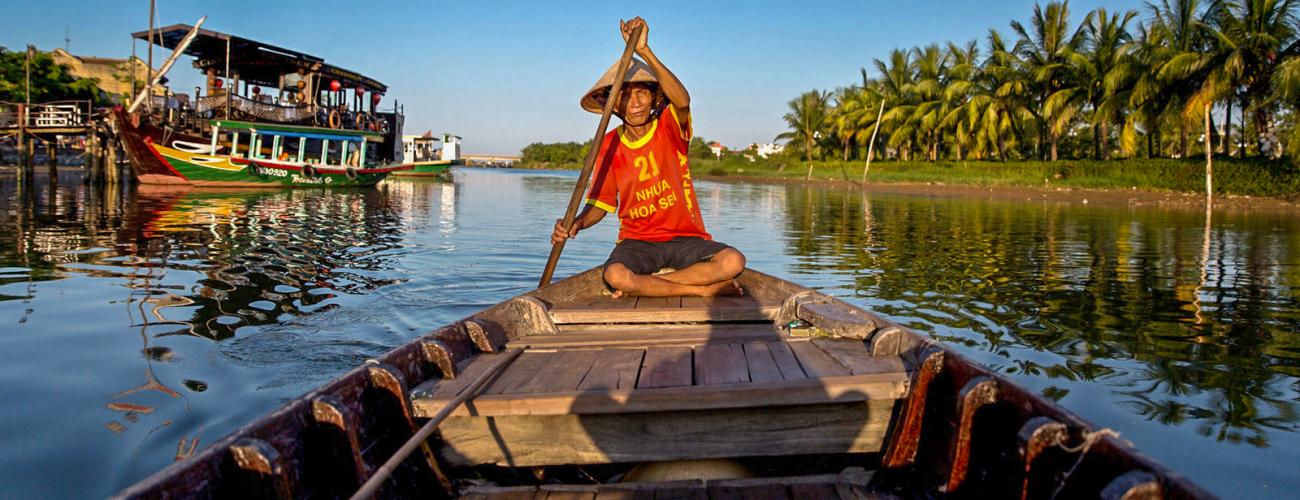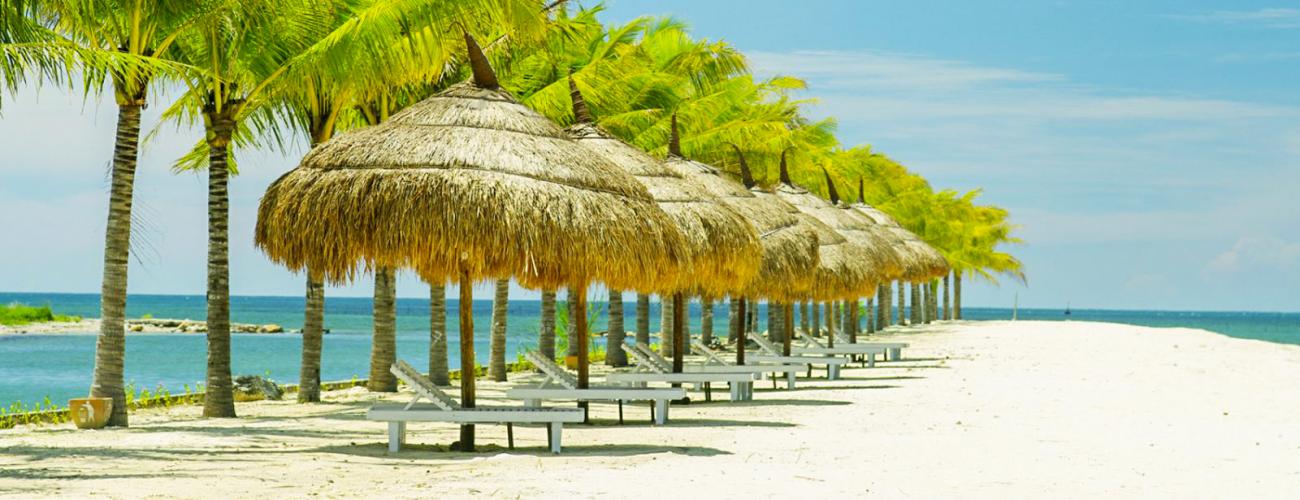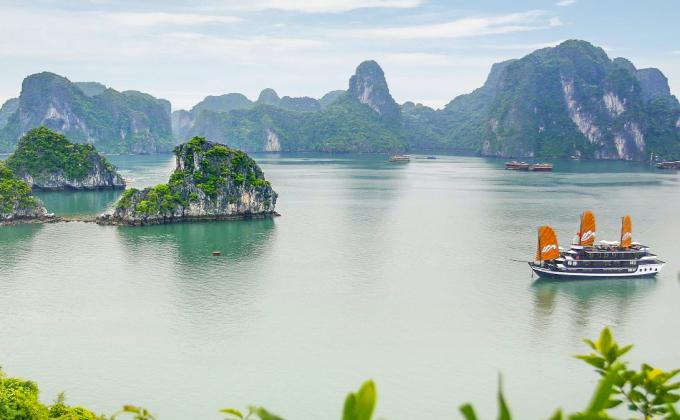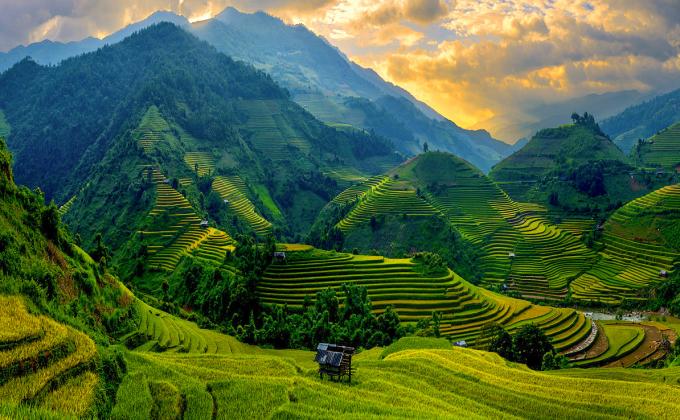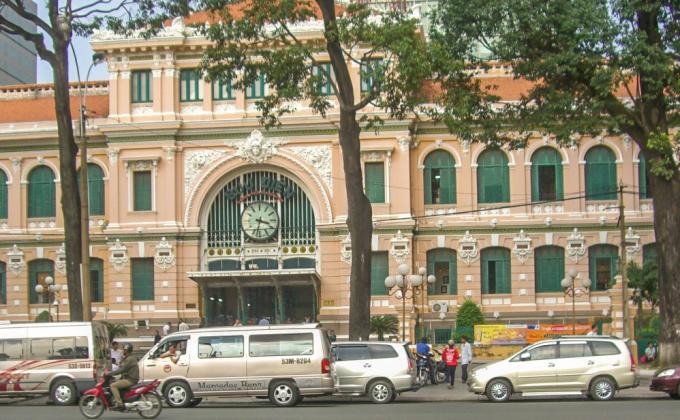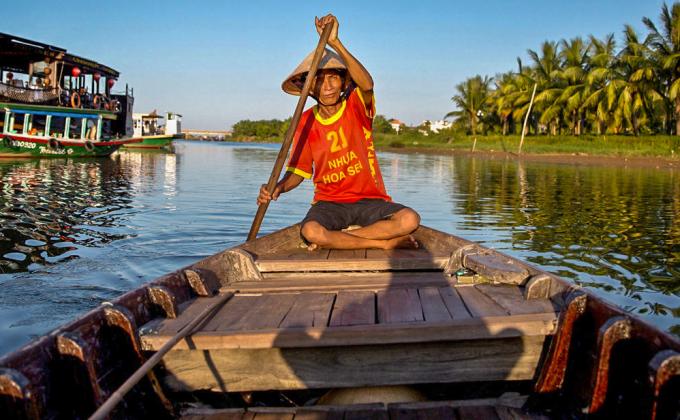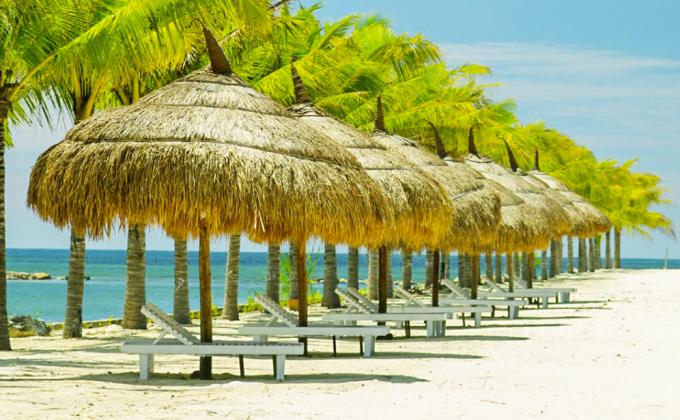Vietnam Overview
![]() Vietnam of today is a youthful nation fueled by the desire for modernization and commercialization while protective of its traditional past. In the stoic political capital of Hanoi in the north and vibrant cosmopolitan Ho Chi Minh City in the south, you will observe modern cities in the making. But along small streets, like those in the Old Quarter in Hanoi, you will still find silversmiths practicing their century-old trade, far removed from the modern changes around them. The former imperial capital of Hue and the ancient port city of Hoi An offer an evocative glimpse into the country’s rich historical past. Impressive structures from the 18th century Nguyen Dynasty are a living testament to the royal legacy of Vietnam’s glorious days.
Vietnam of today is a youthful nation fueled by the desire for modernization and commercialization while protective of its traditional past. In the stoic political capital of Hanoi in the north and vibrant cosmopolitan Ho Chi Minh City in the south, you will observe modern cities in the making. But along small streets, like those in the Old Quarter in Hanoi, you will still find silversmiths practicing their century-old trade, far removed from the modern changes around them. The former imperial capital of Hue and the ancient port city of Hoi An offer an evocative glimpse into the country’s rich historical past. Impressive structures from the 18th century Nguyen Dynasty are a living testament to the royal legacy of Vietnam’s glorious days.
It is the contrasting characteristics of the country, from its historical past to its modern developments and its diverse landscapes and people that will leave a lasting impression.
Vietnam Climate & Weather
Vietnam's elongated shape stretching from the tropics to the subtropics zone accounts for the varied climate in the country. Vietnam is an year round destination, when one part of Vietnam is cloudy and rainy, there are other parts of the country that can be sunny and warm North Vietnam enjoys 4 seasons, meanwhile Central and South have 2, rain and dry seasons. Heat and humidity are typical weather of Vietnam.
Weather is often a determinant factor in travel planning. Since Vietnam covers several climatic zones, the weather can change significantly traveling north to south. The chart below provides average daily minimum/maximum temperatures in degrees Celsius and average rainfall in millimeters.
- NORTHERN VIETNAM (HANOI, HALONG BAY, SAPA)
The north is defined by four seasons with a cold winter and hot summer. The temperature can range from 5˚C (41˚F) in winter up to 35˚C (95˚F) in the summer. From April to October, it is generally warm and humid with average temperature around 31˚C (90 ˚F) and heaviest rainfall between July and August. The average temperature during the cold season (December to February) is 20˚C (68˚F). However, in the mountainous regions in the far north such as Sapa, the temperature can at times drop below zero (32˚F). The loveliest time of the year to visit is from September to December when there’s a good chance of clear skies and low humidity.
- CENTRAL VIETNAM (HUE, DANANG, HOI AN)
The average high temperature in the central region is 30˚C (86˚F). Heavy storms and highest amount of rainfall occurs from October to December and is prone to flooding. The best time to enjoy the beach weather and cultural sightseeing is between February to August.
- SOUTHERN VIETNAM (HO CHI MINH CITY, MEKONG DELTA, DALAT)
The south has a dry and rainy season. The highest amount of rainfall is from June to October with 80% average humidity. The average high temperature year round is 32˚C (90˚F). The central highland town of Dalat has a year-round temperate of 18˚C to 21˚C (64˚F to 70˚F) earning it the epithet “City of Eternal Spring”.
Beach destinations such as Nha Trang, Phan Thiet, and Phu Quoc Island are warm and sunny most of the year. However, the rainy season varies for each destination: Nha Trang (October to December); Phan Thiet (July to November); and Phu Quoc (June to September).
Vietnam Money Matter
The official currency, the dong and is non-convertible. There are notes come in denominations of 500, 1,000, 2,000, 5,000, 10,000, 20,000, 50,000, 100,000 and 500.000 dong notes.![]()
The US dollar, preferably crisp clean bills, is widely accepted among major shops and restaurants. Travelers checks can be cashed at authorized foreign exchange outlets and banks, and require presentation of passport. There is normally a 3 to 4 percent transaction fee for cashing travelers checks.
Visa and MasterCard are now accepted in almost hotels and restaurants. Prices are usually quoted in USD so if you are paying in Dong check the exchange rate first.
ATM machines are available at major cities: Hanoi, Halong, Haiphong , Hue , Danang, Nha Trang and Saigon .
At the time of writing trades at approximately 21,000 dong to US$ 1 and 28,000 VND to 1 Euro.
Vietnam Traditions & Cultures
Vietnamese culture may be still mysterious and unknown to most people outside the country. Today, more and more people are going to Vietnam for traveling and doing business. Getting to know Vietnam and Vietnamese culture is interesting and fascinating. We hope with this website, you can find the most comprehensive information about culture of Vietnam and its traditions.
Vietnamese New Year Food![]()
One of the most traditional special foods for New Years (Tet) of Vietnamese is Banh Chung or sticky rice cake. Banh Chung is made of sticky rice, pork meat and green bean, every ingredient is wrapper inside a special leaf which calls Dong. Making the Banh Chung requires care and precision in every step. The rice and green bean has to be soaked in water for a day to make it stickier. The pork meat is usually soaked with pepper for several hours. Squaring off and tying the cakes with bamboo strings require skillful hands to make it a perfect square. Banh Chung is a must among other foods to be placed on the ancestors' altars during Tet holiday. In the old time, one or two days before Tet, every family prepares and cooks the Banh Chung around the warm fire. It is also the time for parents to tell their children folklore stories. Nowadays, families which live in villages still maintain making Banh Chung before New Years but the people in the city does not. They don't have time and prefer to go to the shop to buy it.
Traditional Song - Xoan Singing
Xoan singing is a folk cultural product of Phu Tho province. The last point of time that Xoan accompany still sang in communal houses of the villages in spring was in 1945. Fortunately, we still had an opportunity to meet singers and instrumentalist who used to sing in the Xoan accompany in the old days when we conducted to investigate, study on Xoan singing in the late August.
It can be said that Xoan singing is still engraved in the memory of folk artists who up to now can perform it in the communal house whenever having the festival. Previously, the Xoan singing belonged to four villages, An Thai, Thet, Phu Duc and Kim Dai of Hac Tri district, Phu Tho province. After the innovation, An Thai village belongs to Phuong Lau, Viet Tri city, and Thet, Phu Duc and Kim Dai villages belong to Kim Duc, Phu Ninh district, Phu Tho province. According to folk artists, of those four villages, the singing style of Xoan accompany of An Thai village is similar to that of Thet village and Phu Duc village similar to Kim Dai. However, it is the difference of order of repertoire, words and the number of dancer, etc, that also creates the own style of each village.
In 1998, together with the establishment of the club of Xoan singing in Kim Duc communes and An Thai village, Phuong Lau commune brought about new vitality for Xoan singing. The generation of elderly folk artists in the old days always tried their best to hand down offspring compositions in the old style of singing in the activity of Club. On the last August 18th, People's Committee of Kim Duc commune opened a festival of Xoan singing competition to rise up the passion and pride of villagers to the special art of the locality. When we coming, villagers of each Xoan village were actively practicing and perfecting compositions to be able to found Xoan accompany of each village according to the policy of the Department of Culture and Information of Phu Pho province. The concern of authority and enthusiastic contribution of the villagers are good news of art of Xoan singing in today's life.
Traditional clothing
A lasting impression for any visitor to Vietnam is the beauty of the women dressed in their long gowns called ao dais. It is a body-hugging, sweeping tunic with long sleeves worn over loose, flowing trousers that brush the floor. The tunic has a high neckline and side slits from the waist to the hem.![]()
Colors often indicate the wearer's status ...
-
young girls wear Ao Dais in pure white;
-
young unmarried women wear delicate pastels; and
- married women in brightly-coloured tunic over white/black trousers.
The first ao dai appeared in 1744 when Lord Vu Vuong of the Nguyen Dynasty decreed both men and women should wear buttoned gowns over trousers. Subsequent changes in the design lengthened the top, fitted the bodice to the curves of the body and moved the buttons from the front to an opening along the shoulder and side seam. Later, raglan sleeves were added, creating a diagonal seam running from the collar to the underarm.
Men once wear a variation of the ao dai with shorter and fuller tunic. Today, men generally wear it for traditional dance or music performance during ceremonial occasions.
Music and Dance![]()
Vietnam has fifty national music instruments, in which the set of percussion instruments is the most popular and diverse. Vietnamese folksongs are rich in forms and melodies of regions from across the country, ranging from reciting poems, lullabies, and chanting. Traditional performing arts include cheo and tuong. Water-puppet shows are also a special traditional art that was ignited in the Ly dynasty. At the start of the 20th century, cai luong (reformed theatre) appeared in Cochinchina with melodies of 'vong co'. The Vietnamese acoustic arts generally have symbolic, expressive and emotional features. Traditional stage performances relate closely to the audience in its combination of music and dance forms. Dance is an elegant affair and rarely filled with hard or rough movements, preferring the grace and sway of arms and body movements.
Water Puppet
If you are ever in Hanoi it will be regretful to miss the Water Puppet Theater - even if you think you are not a puppet kind of person. Water Puppets literally means "puppets that dance on the water". This show is not just geared for kids, but meant to delight adults as well.![]()
Lacquer Painting
Lacquered items have been found in ancient tombs in Vietnam dating as far back as the third and fourth centuries B.C. Over the centuries, Vietnamese master craftsmen and artists have mastered techniques using lacquer for purpose of decoration and preservation. Lacquer paintings now can compete successfully with silk and oil paintings and have the unique character of this style of painting.
Vietnam Destination Highlights
Vietnam is a long country and generally travel geography is divided into three main sections; The Northern Vietnam, Central Vietnam and Southern Vietnam.
The North of Vietnam ![]()
This region contains not only historical and culture sites but also dramatic landscapes of towering limestone cliffs and serene rice paddies. A lot of small but beautiful temples, pagodas in the North-central, the stunning scenery of the Northwest Mountains where you will see the roof of Vietnam and the peaceful, magical and poetic beauty of the sea in the Northeast.
Hanoi: Imagine a city where the exotic chic of old Asia blends with the dynamic face of new Asia where the medieval and modern co-exist. Hanoi - the capital of Vietnam is where imagination becomes reality: the ancient history, a colonial legacy and a modern outlook. There is no better place to untangle the paradox that is modern Vietnam.
Halong: Bizarre but beautiful, Halong Bay is geology gone wild, with hundreds and thousands of limestone pinnacles protruding from the waters. The sublime seascape at this World Heritage site is undoubtedly one of Vietnam’s most enchanting experiences.
Cat Ba: To the south of Halong Bay is Cat Ba Island, a ‘lost world’ landscape with hiking, biking or just hanging around the order of the day.
Sapa: The Queen of the Mountains. Welcome to the destination in northwest of Vietnam gateway to another world of mysterious minority cultures and luscious landscapes. The spectacular scenery that surrounds Sapa includes cascading rice terraces that spill down the mountains like a patchwork quilt. The valleys and villages around Sapa are home to a host of hill-tribe people. Enjoy experience of trekking around mountainous Sapa.
The Central of Vietnam
Home to historical sites, fantastic food and the country’s most iconic beach, central Vietnam deserves to rate as a top priority for travelers. Center of Vietnam is fascinated set of the country’s most famous destinations, including three must-see Unesco World Heritage sites - history-seeped Imperial Hue, architecturally impressive Hoi An and the sacred ruins of ancient My Son. The range of accommodation on offer is extraordinary - from great-value budget places to some of the most luxurious resorts in the country.
Hue: If art and architecture matter more to you than beaches and beer, Hue will be high on your Vietnam must-visit list. It is the place to go for historical, culture and culinary stimulation. The capital of the Nguyen emperors, Hue is packed with temples, tombs, palaces and pagodas - or at least the remains of those that successive armies didn’t manage to completely destroy. Hue is a great location for foodies with the fussy degustation-style Imperial cuisine.
Da Nang: The Vietnam’s fourth-largest city in favour of nearby Hue and Hoi An, Danang has considerable charm in its own right. The economic powerhouse of central Vietnam, it combines the buzz of a bigger city with beautiful beaches and great restaurants. Danang is famous for Cham Museum, Ba Na Hill Station, Marble Mountains and Hai Van Pass.
Hoi An: A highlight of any trip to Vietnam. Hoi An is a town oozing charm and history, having largely escaped the destruction of successive wars. Once a sleepy riverside village, it’s now quite definitely a tourist town. Hoi An is a shopper’s paradise.
The South of Vietnam
Why this region is attracted to a lot of tourists? It is not surprising when you know it is also home to the biggest city, the commercial heart of Vietnam - Ho Chi Minh city (formerly Saigon), home to sleepy villages in the Mekong Delta, home to really beautiful long beaches in the South-central coast and also home to the Central Highland with cooler climate for leisure.
Ho Chi Minh City: Fasten your seatbelts as Ho Chi Minh City is a metropolis on the move - and we’re not just talking about the motorbikes that throng the streets, landing on or off of a plane. We are talking about Saigon. Saigon could not be found elsewhere in Vietnam: fashion boutiques, elegant restaurants and vibrant night clubs create a sense of a new Vietnam trying to break free from the shackles of the past.
The Mekong Delta: To escape the buzz of millions of motorbikes, head west to the watery landscapes of green fields and sleepy villages in the Mekong Delta - Vietnam’s ‘rice basket. Everywhere crisscrossed by the brown canals and rivulets fed by the mighty Mekong River. Its inhabitants - stereotyped as friendly and easygoing - have long toiled on the life-sustaining river, with their labours marked by the same cycles governing the waterways.
South-central coast: Nha Trang and Mui Ne beaches have become the favoured destinations for those whose idea of paradise is reclining by the water, cocktail in hand, contemplating whether to have a massage or a pedicure before hitting the bars later. These sedentary delights are juxtaposed with an excellent array of outdoor activities - swimming, scuba diving, snorkeling, surfing, windsurfing and kite-surfing - making this simultaneously the action capital of the country.
Phu Quoc Island: An island, it is not a part of Mekong Delta, also not a part of South-central but must listed in here. It is a mountainous and forested island, a splendid tropical getaway set with beautiful white-sand beaches and quaint fishing villages.
The Central Highland: It’s easy to get off the beaten track in this wonderfully scenic part of the country. Only Dalat makes it on to most tourists’ radars, meaning that the rest of the region still allows an element of adventure. This is a great part of the country to see on the back of a motorbike - stopping at will to admire an amazing mountain view, to explore a wild waterfall or to interact with villagers from the local hill tribes.
Vietnam Foods & Drinks
The cuisine of Vietnam is excellent. Rice and noodle dishes are the staple of Vietnamese food and are garnished with aromatic lemon grass and/or fresh coriander. Fish, chicken, and/or pork dishes along with cooked vegetables and rice form a typical meal. Asian and European food are available throughout the country.
Drinking tap water or ice is not recommended. Bottled water is readily available but remember to check the seal for possible tampering. You should be drinking a minimum of 1.5 liters of water per day. This should increase as the temperature increases or you are engaging in physical activities. Vietnamese coffee is usually very strong and has a punctuated mockup aroma and flavors. It is usually served in a small glass or cup with a drip filter and additional hot water in a thermos. As the filter empties you top it up from the thermos until you have the required amount of coffee. Condensed milk is added as a whitener and sweetener as it is usually not possible to find fresh milk away for the main cities. Beer is available just about everywhere. Most places stock a selection of local and some imported brands. Draught beer comes in two varieties, Beer Hoi or Beer Tuoi. Beer Hoi is draught beer found on the street stalls and poured straight from the keg. Vietnamese quite often add ice to their beer when drinking. Beer Tuoi is found in the bars and restaurants and is chilled and served under pressure from the keg in a more conventional method.
![]()
Vietnam Travel Tips
Clothing
Light, comfortable, easy to launder clothing is recommended. Winter months in Hanoi and rainy season in the central region can get cool so a sweater or light jacket will come in handy. Good walking shoes and sandals that can be easily removed are recommended especially when visiting temples and people's homes. Ensure you have suitable clothing packed for visiting temples and pagodas that you can cover up with. E.g. Shirts and long pants. No dresses, shorts, singlets, string tops or revealing clothing should be worn to temples and pagodas.
What to Pack
Vietnam is generally a casual country by western standards although people do like to dress in their Sunday best whenever the opportunity arises therefore simple and casual clothes are appropriate for almost any occasion.
The year round heat and humidity in the south, especially Ho Chi Minh City makes lightweight quick dry clothing the most appropriate. The north and central highlands get cool enough for sweaters or light jackets for much of the year but the northern highlands will require cold weather clothes in the winter.
If you are not participating in any trekking tours sandals and lightweight shoes are sufficient. If trekking is included in your itinerary you will need trekking boots.
People
The majority of the population is comprised of the Viet or Kinh (87%) people who speak the Vietnamese language. The minority population is made up of 54 ethnic hill tribe people who mainly live in the extreme south, central and northern mountainous areas of the country. The best-known hill tribes are the TÃ y, Hmong, Zao, White and Black Thai, Muong (both mainly from the north), and the Hoa, Khmer in the South. Each hill tribe has its own unique customs and dialect and some are able to speak official Vietnamese language.
Language
Vietnamese, the national language is tonal and monosyllabic, which means the meanings of the word change according to the pitch they are pronounced at. The accents and some words are quite distinct among the three regions of North, Central, and South.
Today, English, French and Chinese have replaced Russian as the most studied and spoken languages.
Health requirements
No vaccinations are officially required by the Vietnamese authorities, however immunization against cholera, hepatitis, typhoid, tetanus, polio and Japanese encephalitis is advised. Please consult your doctors for further medical advice.
You should carry a basic medical kit that includes anti diarrhoea tablets and re-hydration salts. Medical standards outside Hanoi and Saigon are lower that those found in western countries.
Arrival Gateway & Visa
Visitors must obtain visa approval prior to entry. A tourist visa for Vietnam can be obtained from any Vietnam Embassy or consulate office worldwide. Visas are valid for 30 days and can be extended through our head office in Vietnam.
All visitors must complete an Entry/exit Card. This should be submitted together with passport and visa to the Immigration Department officials at the point of entry. The Exit portion will be torn off and returned to the visitor, who should retain this for presentation upon departure. It is a good idea to staple this into your passport on the page that has your visa stamp.
Customs procedures
All visitors must complete a Customs Declaration Form. Both the copy and the original will be stamped. The Customs officers will retain the original copy while the copy (so called yellow paper) will be given back to the visitor, who must submit it upon departure. These forms will be passed to you on your flight to Vietnam . Every form asks for your contact address in Vietnam.
Visitors can obtain a visa upon arrival in Vietnam. We can apply for you to get a visa upon arrival at Tan Son Nhat International Airport, Ho Chi Minh City, at Danang International airport, Da Nang or Noi Bai international airport, Hanoi. The visa is done by us, an urgent visa on arrival (3 days before arrival) can be applied with a higher rate, all of these needs 2 passport sized photos.
Notes:
Vietnam exempts visa for Asean Citizens, Scandanive citizens as well as Japanese, South Korean tourists.
Ho Chi Minh City's (Saigon) Tan Son Nhat Airport is Vietnam's busiest international air hub, followed by Hanoi's Noi Bai Airport. A few international flights also serve Danang and it has emerged as the principle embarkation points for Vietnam but it's still possible to get direct flights from a number of major Asian and European cities and a few American, Australian cities.
There are currently six border crossings for travellers coming to Vietnam, but more may open soon. All crossing points suffer from heavy policing and often requests for 'immigration fees'.
For getting to from China, it's become very popular to cross the border at Friendship Pass or Dong Dang, 20km (12mi) north of Lang Son in northeast Vietnam , to get to/from Namning. There is a twice-weekly international train between Beijing and Hanoi that stops at Friendship Pass. The other popular border crossing with China is at Lao Cai (near Sapa) in northwest Vietnam, which lies on the railway line between Hanoi and Kunming in China 's Yunnan Province. There's also a seldom used crossing at Mong Cai, Quang Ninh Province.
It's possible to enter Laos from Lao Bao in north-central Vietnam; there's an international bus from Danang to Savannakhet (Laos). The other crossing is at Keo Nua Pass/Cau Treo, west of Vinh.
The only crossing to Cambodia is via Moc Bai; an international bus links Phnom Penh with Ho Chi Minh City.


